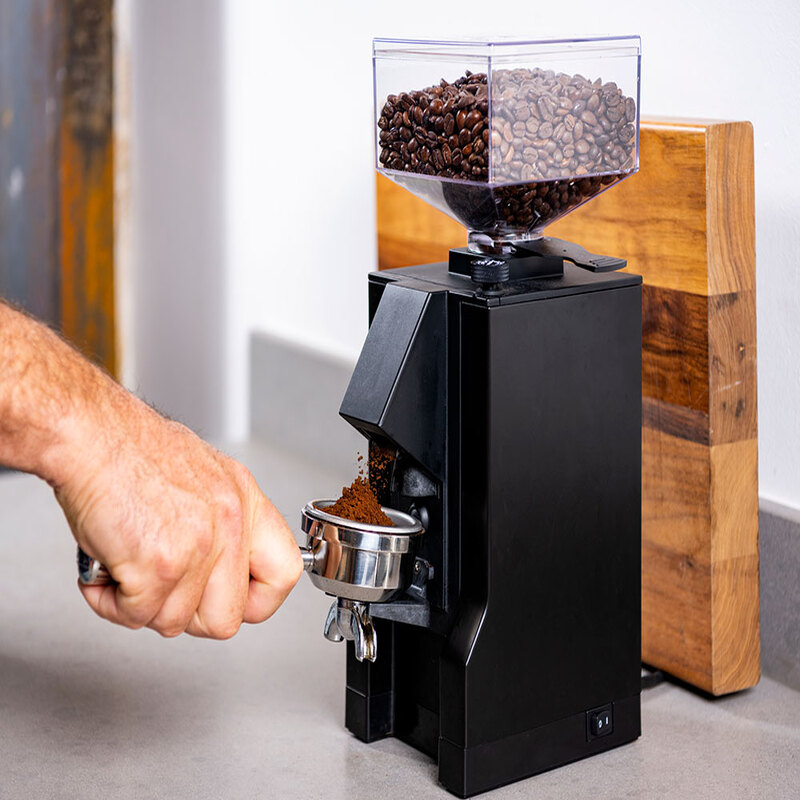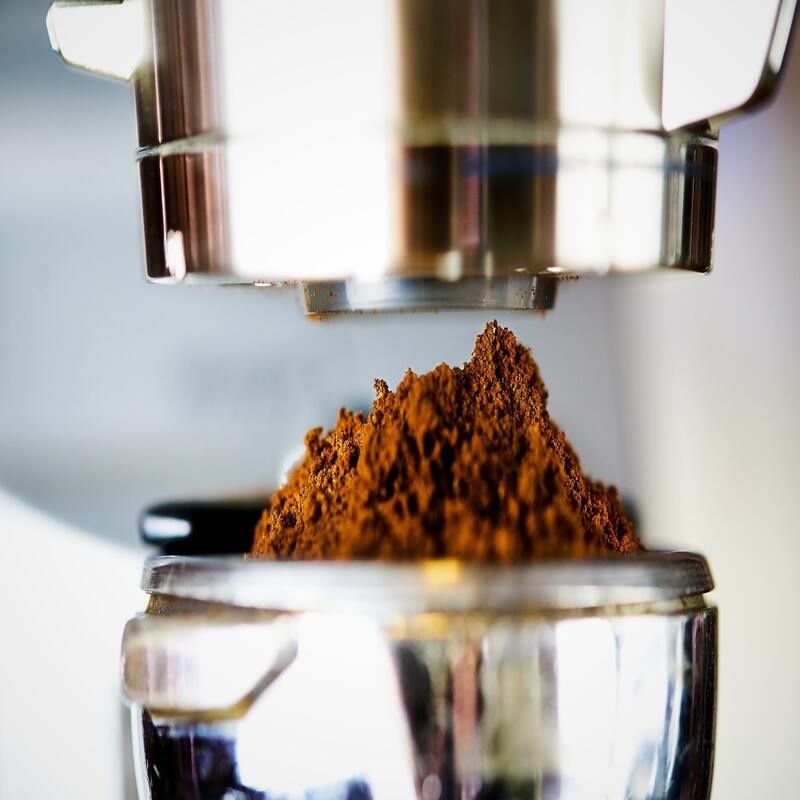Importance of the Right Grinder for Espresso
Can you grind espresso beans in a coffee grinder? For espresso lovers, the grinder’s role is vital. A good grinder is just as crucial as the espresso machine. To get that delicious espresso shot, you need finely and consistently ground beans. A quality grinder ensures this precision. Blade grinders can’t provide the fine grind necessary for espresso. They give uneven results, which can ruin your espresso’s taste. Burr grinders, however, deliver uniform grinds every time. This is because they crush beans between two burrs. Choose a grinder that lets you adjust grind size finely. This means you can dial in the right setting for your espresso. A right grinder makes a difference. It can elevate your home espresso from good to great. Remember, great espresso starts with great grinding.
Key Features to Look for in an Espresso Grinder
When searching for an espresso grinder, certain features are crucial. They ensure that your espresso shots are consistently delicious.
Burr Grinder vs Blade Grinder for Espresso
For espresso, it’s important to pick a burr grinder over a blade grinder. Burr grinders crush beans evenly, which is key for great espresso. Blade grinders chop inconsistently, leading to uneven extraction and poor flavor in your espresso.
Fine Grind Capability and Consistency
A great espresso grinder must grind coffee beans fine enough for espresso. It also needs to do this with remarkable consistency. Poor grind consistency can make coffee taste sour or bitter.
Electric and Manual Grinder Comparison
Electric grinders offer quick and easy grinding. They are great for multiple espresso shots per day. Manual grinders are cheaper. They require more effort but can still produce a fine and consistent grind.

The Importance of Grind Size for Espresso
Understanding grind size is crucial for brewing quality espresso. Espresso requires a fine grind size to produce a rich and flavorful shot. If the grind is too coarse, water will flow through too quickly, resulting in weak and under-extracted espresso. Conversely, if the grind is too fine, water will struggle to pass through, leading to over-extraction and bitter flavors. Thus, achieving the perfect grind size is essential to creating the best espresso experience.
Ideal Grind Texture for Espresso
When grinding espresso beans, the texture should resemble granulated sugar. This fine consistency allows for optimal extraction during brewing. The espresso machine forces hot water through the coffee grounds under pressure. Consequently, a uniform grind size ensures even extraction and enhances the flavor profile. Variations in grind size can lead to inconsistencies in the espresso shot and affect taste. Therefore, having a reliable grinder that can achieve this consistency is imperative.
In addition to texture, grind size will also depend on the equipment used. Different espresso machines may require slight adjustments in grind size. For instance, machine pressure and water temperature can influence the flow rate. Thus, small adjustments in grind size may be necessary based on individual machines. Therefore, learning how to tweak your grind size can significantly enhance your espresso brewing technique.
How to Test Grind Size
One effective way to determine if your grind size is correct is by conducting a taste test. After grinding your beans, brew a shot of espresso and take note of the flavor. If the shot tastes bitter or overly strong, it may be over-extracted due to a too-fine grind. In contrast, if the flavors seem weak or sour, it could indicate a grind that is too coarse. Regularly testing your grind size allows for continual improvement.
Another useful method is the time it takes for the espresso to brew. A good shot of espresso usually takes about 25 to 30 seconds to pull. If you’re achieving this timeframe but are still unhappy with the flavor, adjust your grind size incrementally until you find the ideal texture. With practice and attention to detail, you’ll learn how to perfect your grind size and enhance your espresso experience.
Recommended Espresso Grinders for Home Baristas
Finding the perfect espresso grinder can elevate your coffee experience. Here are the top picks for home baristas.
High-End Electric Grinders
For those who take their espresso seriously, high-end electric grinders are a must. They offer precise grinding with many settings for your perfect shot. The Baratza Sette 270 is known for its adjustable settings and quality grind. The Breville Smart Grinder Pro also stands out with its consistent grind and user-friendly interface.
Budget-Friendly and Manual Options
If you’re on a budget or enjoy the hands-on process, manual grinders are a great choice. They are cost-effective and can still produce a fine grind for espresso. The JavaPresse Manual Grinder is a popular choice. It’s compact, affordable, and reliable for a fine espresso grind. Remember, a consistent grind is key, so choose a grinder that can deliver it while fitting your budget.

Step-by-Step Guide to grind espresso beans in a coffee grinder
Grind espresso beans in a coffee grinder is key for a great home brew. This step-by-step guide will help you master the grind.
Selecting the Perfect Beans
Not all beans make great espresso. You need a blend of Arabica and Robusta for the right flavor. Look for a recent roast date to ensure freshness. Fresh beans give your espresso a rich, bold taste.
Measuring and Adjusting Grind Size
For a double shot, use 18-20 grams of coffee. A burr grinder can get the fine grind needed for espresso. Choose a fine setting on your grinder, but not too powder-like. The right grind feels slightly gritty between your fingers.
Testing and Tailoring Your Espresso Shots
Brew a shot and taste it. If it’s sour or weak, try a finer grind. If it’s bitter, go a bit coarser. Keep adjusting until you find the best flavor for your taste. This takes time. Soon, you’ll know exactly how your espresso should taste.
Tips and Techniques for Mastering Home Espresso Grinding
Understanding Your Espresso Machine
To get perfect espresso shots, know your machine well. Each machine has unique settings and needs. Learn about water temperatures, pressure adjustments, and preheating. Read the manual carefully. Practice using the machine. Pay attention to how it operates. This makes mastering grinding easier.
Calibration and Cleaning of Your Grinder
Calibrate your grinder for the best results. Use a coin to check the burr’s closeness. Change settings slowly. After changing them, grind espresso beans in a coffee grinder a small amount of beans. Check the consistency. Clean your grinder often. Use a brush or a grinder-specific cleaning product. This helps maintain grinder performance.
Troubleshooting Common Grinding Issues
If espresso tastes off, check your grind first. A bitter taste often means too fine a grind. An underwhelming, sour shot might need a finer grind. Make small adjustments. Test the results. Always use fresh beans. Stale beans can ruin a good grind. If issues persist, your grinder might need a check-up or replacement.

Troubleshooting Common Grind Problems
Despite the best intentions, issues may arise during the grinding and brewing process. Many coffee drinkers encounter common problems, such as flavors that are too bitter, weak, or overly acidic. Identifying these issues early and knowing how to troubleshoot them is essential. This knowledge helps in adjusting your grind size or other parameters to achieve your desired results.
Bitter Espresso
Bitter flavors in espresso may indicate over-extraction or a grind that is too fine. When water spends too much time in contact with the coffee grounds, bitterness can develop. To address this issue, try adjusting your grind size to a slightly coarser texture. Additionally, consider shortening the brewing time. Minor adjustments can drastically improve the taste of your espresso.
Weak or Sour Espresso
Conversely, if your espresso tastes weak or sour, it may be under-extracted. This situation usually occurs when the grind size is too coarse, leading to fast water flow through the grounds. To remedy this, try to grind espresso beans in a coffee grinder a bit finer to enhance extraction. Additionally, ensure that your water temperature is optimal. Making these adjustments can significantly enhance flavor and achieve a balanced shot.
Conclusion: Elevating Your Home Espresso Experience
To sum up, the right grinder is key to perfect home espresso. A precise bean grind makes all the difference. Burr grinders offer the fine consistency needed for excellent shots. Remember: fresh beans, a quality grinder, and a bit of practice work wonders.
Whether you choose a high-end electric grinder or a manual one, consistency is what counts. Adjust and retest your grind size until you nail it. Know your machine, keep your grinder clean, and always stay curious. Fine-tune and troubleshoot as you go along.
Your morning cup can bring joy and a smile. Keep experimenting with your home espresso setup. You’ll soon be making shots that rival your favorite coffee shop! Embrace the journey and savor every sip of success.
